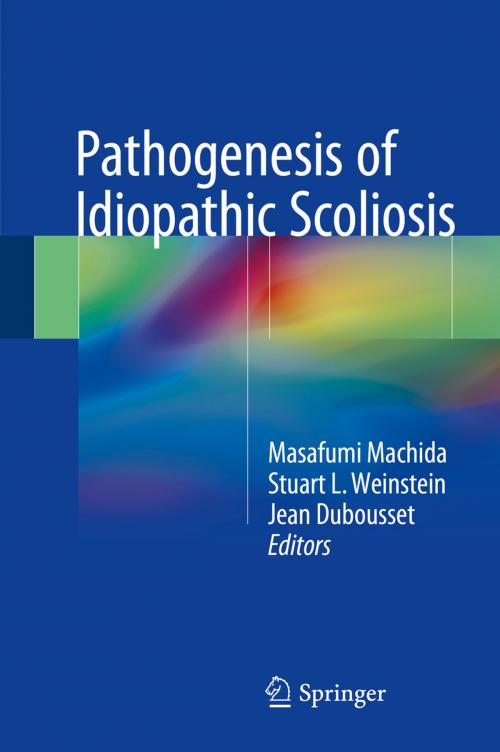Pathogenesis of Idiopathic Scoliosis
Nonfiction, Health & Well Being, Medical, Specialties, Pathology, Orthopedics| Author: | ISBN: | 9784431565413 | |
| Publisher: | Springer Japan | Publication: | February 23, 2018 |
| Imprint: | Springer | Language: | English |
| Author: | |
| ISBN: | 9784431565413 |
| Publisher: | Springer Japan |
| Publication: | February 23, 2018 |
| Imprint: | Springer |
| Language: | English |
This book provides comprehensive coverage of current topics in idiopathic scoliosis (IS). A three-dimensional deformity of the spine, the condition is characterized by lateral curvature combined with vertebral rotation. The primary lesion, however, lies in the median sagittal plane, taking the form of a lordosis. Although the clinical manifestations of scoliosis have been well documented, its cause and pathogenesis have not yet been determined. Research into what causes IS has focused on the structural elements of the spine, spinal musculature, collagenous structures, the endocrine system, the central nervous system, and genetics. Results of these studies have brought about a new perception of IS epiphenomena, but the main cause of IS remains unknown. Recently, several investigators have produced new hypotheses regarding the cause of IS using the developing techniques of genetics, biochemistry, and neurology. This book is a review of the various causative factors thus far proposed for IS and an introduction to the directions in which research is heading to determine the primary cause of IS.
This book provides comprehensive coverage of current topics in idiopathic scoliosis (IS). A three-dimensional deformity of the spine, the condition is characterized by lateral curvature combined with vertebral rotation. The primary lesion, however, lies in the median sagittal plane, taking the form of a lordosis. Although the clinical manifestations of scoliosis have been well documented, its cause and pathogenesis have not yet been determined. Research into what causes IS has focused on the structural elements of the spine, spinal musculature, collagenous structures, the endocrine system, the central nervous system, and genetics. Results of these studies have brought about a new perception of IS epiphenomena, but the main cause of IS remains unknown. Recently, several investigators have produced new hypotheses regarding the cause of IS using the developing techniques of genetics, biochemistry, and neurology. This book is a review of the various causative factors thus far proposed for IS and an introduction to the directions in which research is heading to determine the primary cause of IS.















